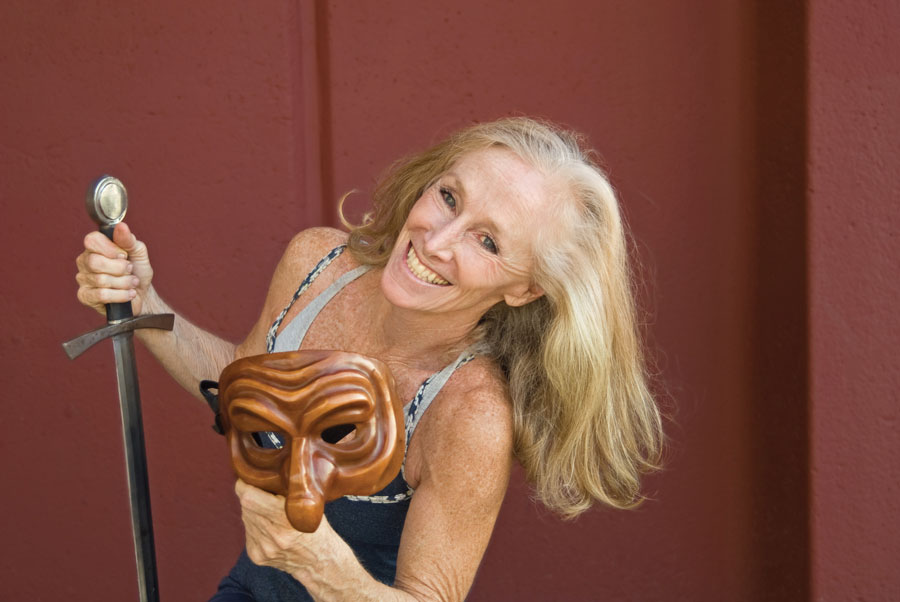Sara Romersberger’s advice to those entering the theatre field is clear. “Be prepared to do what you love and don’t worry if someone thinks you’re crazy.” She goes on: “There is a way to make money doing what you love. If you can’t make money doing what you love, do it on the side until you can.”
Romersberger herself went through a period of working in real estate parallel to her work as an artist, but now she’s doing what she loves full-time, or full-time-plus. Her career as a director, fight director, dance choreographer, and performer spans decades and venues from the professional to the academic, and includes film and international credits.
Her practice obviously informs the teaching she does as an associate professor at Southern Methodist University. It also stood her in good stead in her former position as president of the Association of Theatre Movement Educators (ATME). It was there that she worked to increase the profile and recognition of movement professionals in the theatre, whether as an expert member of a tenure review board or writing letters for the tenure reviews of others. That gave her quite a bit of practice writing about movement, which led her to contribute chapters to academic books on Lecoq, commedia dell’arte, and physical dramaturgy. She insists, though, that she didn’t write on these subjects until she had something valuable to add to the literature; accordingly her scholarly work didn’t begin until she was in her 60s.
Movement composition, according to Romersberger, should be guided by three essential principles: simplicity, specificity, and struggle. These elements allow for narrative effectiveness and clarity, and can serve as guideposts in the creative process. Thanks to her more than 50 years of teaching, these lessons have been carried into the profession by countless colleagues.
Yes, colleagues—that is how she sees her former students the moment they graduate and enter the profession. She says they can still reach out to her anytime for advice, syllabi, anything. And so she gets calls and emails from former students to let her know that something they worked on together years ago has resurfaced in their professional lives.
She also considers them colleagues because Romersberger is an artist first and foremost. In her opinion, it is “absolutely necessary to be working professionally to be a good teacher,” both because it hones one’s skills and because of the authority that comes with actively doing the thing that you are teaching in a professional context. When she speaks of bringing the profession into the classroom, this is what she means—she brings herself and her experiences.
Kathleen Golde, an internationally recognized aerialist, voice-over artist, and choreographer in her own right, says of Romersberger that she “models excellence as a human and as an artist; she exemplifies following your truth and made me realize that I could follow mine. There’s really no substitute for having authentically inhabited your work for such a long time, and she essentializes that.”
Romersberger’s own training included not just degrees in theatre and dance, but the full program at the École Internationale de Théâtre Jacques Lecoq with Lecoq himself, as well as taking part in one of the early National Stage Combat Workshops organized by the Society of American Fight Directors. But though she encourages students and colleagues to follow their passions, she also teaches them ways to protect their bodies. It is advice she has obviously taken to heart, as she is still able to turn cartwheels at an age when many of her contemporaries would be unable to demonstrate their own work.


